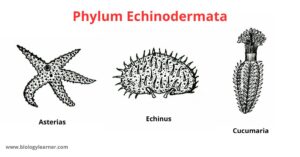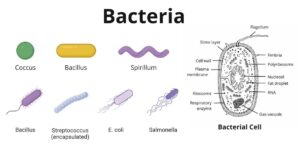
Prokaryotic Cell: Definition, Features, Structure, Examples
In 1957 Dougherty has divided cells into two types based on the organization in the nucleus of the cell. One is a prokaryotic cell (primitive cell) and the other is…

In 1957 Dougherty has divided cells into two types based on the organization in the nucleus of the cell. One is a prokaryotic cell (primitive cell) and the other is…

Phylum Echinodermata represents the most advanced invertebrate phylum closer to the chordates. They vary substantially in size which may range from 1 cm to about 2 m in length. In…

Phylum Mollusca is the second largest invertebrate phylum containing more than 90000 described living species after phylum Arthropoda. Johnston has first coined the name Mollusca in 1650. Although Aristotle was…

Bacteria are unicellular. Their structure is a very simple type. Bacteria are prokaryotes because they do not have a well-formed nucleus. A typical bacterial cell is structurally very similar to…

Bacteria are a type of simple, microscopic, unicellular organism. In 1675, Dutch scientist A. van Leeuwenhoek was first discovered bacteria. He proved the existence of bacteria in his own made…

In the phylum Arthropoda, there is the most number of animal species. The phylum Arthropoda contains more than 1079290 known species like Apis, Laccifer, Millipede, Palaemon, etc. The name Arthropoda…

The phylum Annelida is a group of organisms having ring-shaped segments. The term Annelida is derived from the Latin word; “Annulus = ring“ There are more than 15000 known species…

Aschelminthes is considered a superphylum, which includes many phyla. The term Aschelminthes was first introduced by Grobben in 1910. Earlier in 1859, Gegenbour was named Nemathelminthes for this phylum. So,…

In 1859 the scientist Gegenbaur proposed the name phylum platyhelminthes. Originally the animals of this group were placed in the taxon vermis by Linnaeus in 1735 along with other worms.…

Phylum Ctenophora and Phylum Cnidaria were in one phylum (phylum Coelenterata) in the early days. Later Coelenterata was divided into two separate phyla one is Cnidaria and the other is…